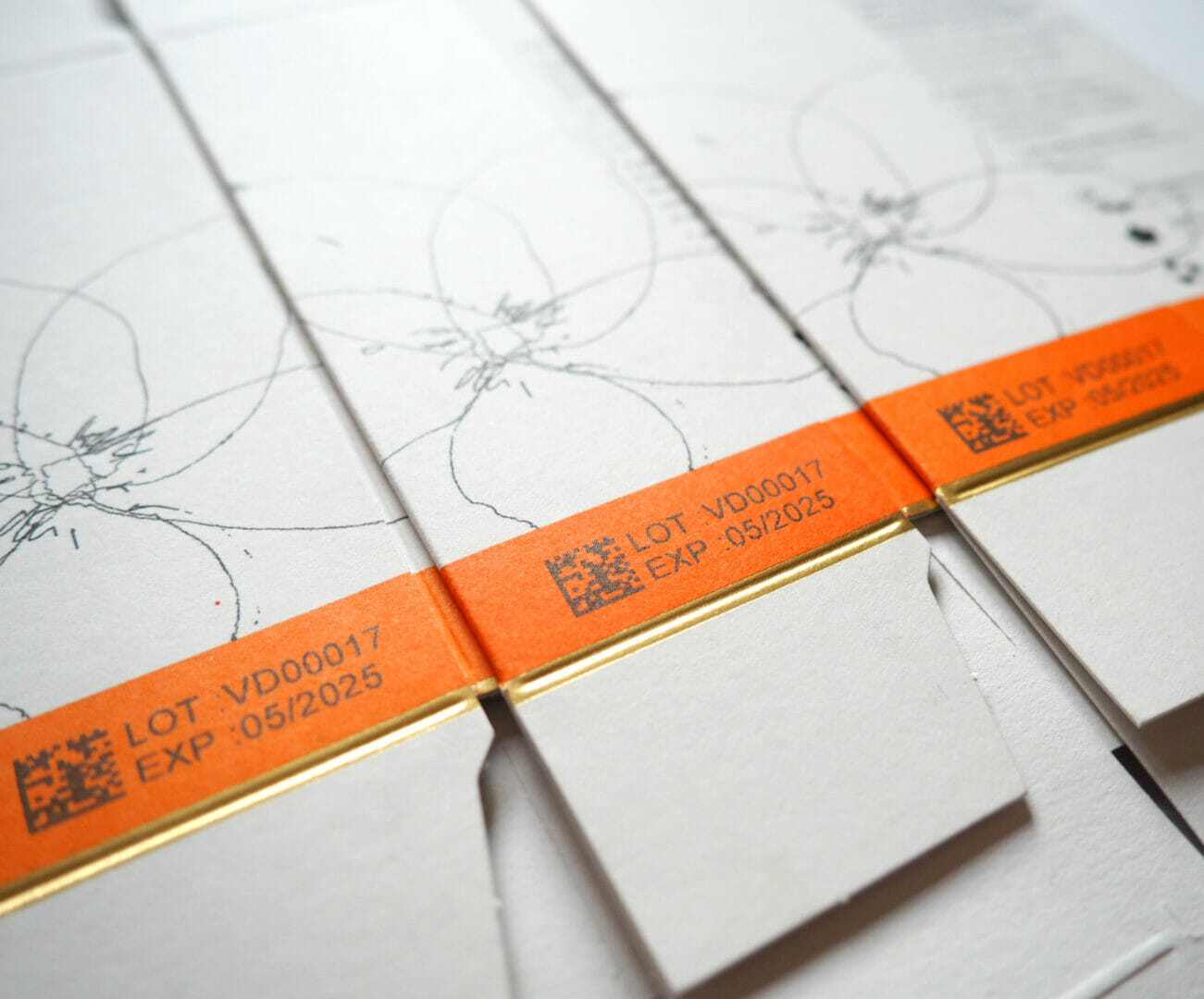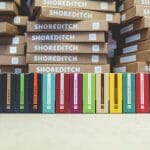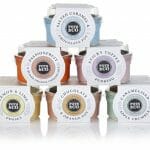Luxury goods such as premium food, cosmetics and perfume rely on beautiful, carefully crafted packaging to deliver their vital on-shelf ‘wow factor’. Quality is integral and the luxury category, more than others, prefers minimal over cluttered, confusing branding and messaging.
The challenge is online coding systems often have to contend with novel package designs, unusual shapes, elaborate embellishments, making it harder to reliably overprint important batch numbers, barcodes and expiry date information. High-precision thermal inkjet (TIJ) printing and offline coding systems can provide reliable solutions to meet these quality challenges, says Rotech director Richard Pether.
Many premium brands are realising the benefit of offline coding. Artisan dessert producer Pots & Co, which supplies top tier retailers such as Waitrose, Booths and Selfridges, switched from hand stamping sleeves to an offline solution when the company’s production rates grew from several hundred to over ten thousand a day. Coding quality and speed underpinned their decision.
Fraser Thomson, operations director at Pots & Co explains: “Over the past couple of years we have rapidly expanded and using the Rotech RF2 coding system has allowed us to keep up to speed with production levels to meet our customer demands. The RF2 prints date and batch codes with ease in the correct position each and every time. We are delighted with the system and no longer have the worry of poorly printed eligible codes which can be resultant of hand stamping.”
Coding packaging such as cartons, sleeves or pouches offline before they are filled enables them to be brought to the production line ready printed, explains Richard. “This presents considerable advantages for code quality, as coding the pack in its flat form results in a consistently clear, perfectly positioned code.”
Short production runs often associated with exclusive or limited edition luxuries are another reason why manufacturers might consider adopting offline coding. Rather than installing a printer on each production line, a single offline system can cater to different packaging types and product ranges.
Practical and cosmetic
Nowadays, thanks to solvent-based technology TIJ printers can also cope with applying code direct onto glossy surfaces prevalent in the luxury brand market, often with greater clarity than continuous inkjet (CIJ).
Because TIJ systems print at a resolution of up to 600dpi the font of any overprinted information can be adapted to match the carefully-designed branding on the package. This can be especially beneficial in the cosmetic market, for example identifying different lipstick shades on a small packaging space without losing brand differentiation. Likewise, if brand owners prefer coded information to be clear but not too eye-catching, TIJ print density can be lightened.
In contrast, CIJ systems typically print characters using a 7×5 matrix, which doesn’t provide great resolution and cannot hope to match specialist fonts. TIJ also offers more general advantages over CIJ in terms of convenience, cleanliness and cost. For instance, the cost per character using TIJ can be four times less expensive than CIJ. And they use a clean, compact, cartridge-based system that’s virtually maintenance-free, with no associated spillage or mess.
London based e-cigarette company Shoreditch is using a RF2 standalone friction feed overprinting system fitted with iJet TIJ coding system to meet new labelling rules without having to make changes to the rest of its production line. It is also helping Shoreditch to protect its branding and minimise the number of unique carton designs it needs to deploy across its range of vaping products.
Following a 19 May 2017 deadline, all vaping liquids and cartridges for sale in the UK must comply with the Tobacco and Related Products Regulations (TRPR) 2016. TRPR requires all nicotine containing e-liquids, and the hardware to hold them, to meet strict labelling standards. This includes displaying a health warning about nicotine over at least 30% of the two largest surfaces of the unit packaging.
“We previously put batch codes directly on the bottle labels but there’s not much room on there. We’re a brand-led business and we didn’t want to use the real estate of the bottle for the health warning since it wouldn’t leave much room for anything else,” explains Andy Kirby, director of Shoreditch. “We therefore decided to insert the bottles into individual unit packs so they can have the warning and all the other information on there.”
Fighting luxury fakes
High-end brands are also targets for counterfeiting, with cosmetics, perfumes and personal care items especially vulnerable. In June 2017, the European Union Intellectual Property Office (EUIPO) reported that legitimate brands lose around EUR 5 billion annually due to counterfeit products, representing almost 8% of the sector’s sales, with an estimated 80,000 jobs lost as a result.*
€605 million, or 3.3% of the UK pharmaceutical sector’s sales, is now lost annually as a result of counterfeiting, with 2,940 direct jobs lost.And task forces are finding more fake drugs every year.
TIJ can help strengthen anti-counterfeiting measures. While the main coding information can be printed as normal, UV-fluorescent inks can also be used to add security information to the pack that only shows up under UV lights. What’s more, the systems used to feed packs through the printer can also be used to add a security label.
With the luxury packaging predicted to grow twice as fast in Western Europe as packaging overall over the next few years (3% per year versus 1.5%**), more than 5% per annum globally, premium brand owners need to consider how they will continue to catch the eye of luxe-loving consumers, without losing out to fraudsters or damaging brand reputation with poorly placed codes. “Premium packaging is the single touchpoint for consumers and you need to let the quality speak for itself. This applies as much to the packaging container itself as the codes on it. Premium packaging commands a premium price, so even relatively low-frequency errors are likely to be expensive in terms of packaging waste, adds Richard.











